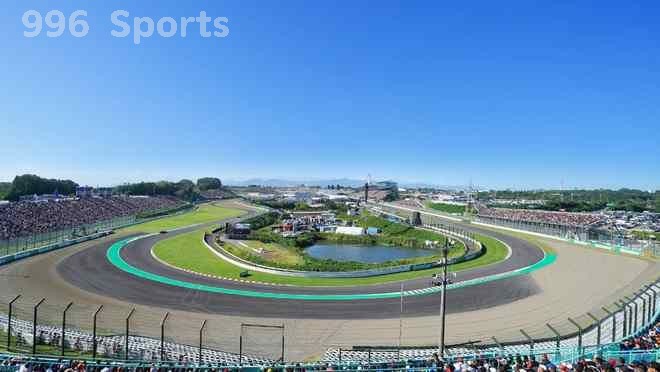
Where are the 13 noisiest F1 tracks in the world?
The most shocking part of motorsports is undoubtedly the roar of the motor and the friction sound of the track, it's simply too exciting!
Fortunately for car enthusiasts, Formula One racing is highly regarded by the world's elite. A large amount of funds are pouring into the construction and maintenance of racing cars, teams, and the world's noisiest racetracks. Here are the 13 noisiest tracks.
Istanbul Park Circuit
In 2005, Türkiye hosted their first Formula One race - Türkiye Grand Prix at the Istanbul Park Circuit, which was loved by noisy fans. The first Grand Prix was spectacular, with Kimi Raikkonen and McLaren winning the race. In 2021, the COVID-19 epidemic will temporarily withdraw the Istanbul Park track, but we heard that they will return in the next few years.
The Istanbul Park circuit is famous for its infamous turn 8, which is a continuous left-hand turn. The track withdrew from the rotation arrangement of the F1 season in 2011 and returned in 2020. The brand new asphalt surface was hit by some heavy rainfall in the Mediterranean region, making the race quite noisy.
Spa Francorchamps Circuit
The Spa Francorchamps circuit can be traced back to the beginning of this sport, hosting the first Belgian Grand Prix in 1950, which was also the first season of Formula One. This 4.3-mile track features some of the noisiest corners in F1 racing.
F1 enthusiasts learn about the Spa Francorchamps circuit through the Elrog and Radyong bends. In dry races, F1 drivers can pass through the Elrog bend at full speed and press the accelerator to the bottom. When passing the Elrog turn at a speed of 180 miles per hour, the car rose nearly 114 feet in an instant.
Silverstone Circuit
The Silverstone circuit in England is another circuit that was first built in 1950. In fact, the Silverstone circuit is often referred to as the "home of F1". Over the decades since its launch, the Silverstone circuit has undergone multiple layout changes, but it has always been bustling.
The Silverstone track is relatively wide, providing ample space for drivers to overtake each other, achieving some of the most exciting moments in F1 history. The track is fast and smooth, with a combination of medium and high-speed bends, but due to the wider track, low-speed bends are equally interesting.
Circuit de Monaco
Monaco is located on the French side of the Italian border. The Monaco circuit is embedded in the city streets of Monte Carlo, the most famous metropolitan area. That's right - this narrow but winding street track is very lively.
The Monte Carlo Street Circuit is the venue for one of the longest running races in the F1 schedule. F1 enthusiasts love its high risk, as Monaco's narrow corners leave little room for error. The narrow roads limit opportunities for overtaking, and obstacles exist in every corner of the Monte Carlo circuit, making obtaining a good starting position a part of the winning strategy.
Imola Circuit - Enzo and Dino Ferrari International Circuit
The Imola Circuit is a popular F1 destination in Italy, located approximately 25 miles east of Bologna in Imola. Due to limited overtaking opportunities, some races held in Imola are very lively.
Since the mid-1990s, the Imola circuit has undergone some layout adjustments, but it has always been praised by drivers and fans as one of the most beautiful yet challenging tracks in the race. Imola's contract is only valid until the 2025 season, and F1 enthusiasts are anxiously waiting for his renewal.
AVUS - Automotive Traffic and Practice Roads
AVUS has only hosted one official Formula One race, but it remains one of the busiest tracks in the sport.
Winning the AVUS competition is not so much an elegant technical dance as a pure power struggle.
AVUS has a total length of 8.3 miles, connected by two 4-mile straight roads through four major bends, one of which has a slope of 43 degrees.
During the 1959 German Grand Prix, AVUS allowed F1 cars to achieve extremely high speeds, but Jean Vela's fatal collision turned it into a one-time Formula One track.
Suzuka Circuit
The Suzuka circuit is Honda's contribution to international racing, which has facilitated many intense races.
Due to its fast turning rate and overpass layout, Suzuka has brought some extremely challenging races to drivers in the F1 race.
Suzuka has a legendary 130R turn, which is a high-speed left turn that cars typically enter at a speed of 190 miles per hour. We heard that some racing cars continuously generate a gravitational acceleration of up to 4.5G at the top of the curve, with a peak even reaching 5G.
Hockenheim Baden-W ü rttemberg Circuit
The history of Hockenheim circuit can be traced back to the early 1930s and it is one of the long-term venues for the German Grand Prix.
The tragic tree accident ultimately led to a redesign of the track, forming a shorter middle section and a sports field area, while integrating the first bend of the original track.
However, its new version also hosted some equally lively races, and global F1 fans named Hockenheim the best race of the decade in 2019.
The Circuit of the Americas (COTA)
The Circuit of the Americas, also known as COTA, is a large event venue located in Austin, Texas, with a lively track layout inspired by the most exciting Formula One tracks. COTA opened on October 21, 2012. In addition to the track, there is also a large live music venue and other entertainment facilities, including a miniature kart track that imitates the lively COTA track process.
COTA's first Grand Prix in 2012 was the first F1 race in the United States since the end of the Indianapolis race in 2007. The American circuit integrates technological curvature layout, incorporating elements of Silverstone, Suzuka, and Hockenheim. The turns 3 to 6 are modeled after the high-speed Maggotts/Becketts turns of Silverstone and the S-shaped turns of Suzuka, while the turns 12 to 15 are modeled after the stadium area of Hockenheim. The special seats on turns 15 and 16 allow F1 fans to immerse themselves directly in the race, in a true Austin style, with COTA staff providing catering services in the main stand area.
Callarami Circuit
The Callarami circuit hosted South African F1 races from 1967 to 1993 and showcased some of the most lively events in the sport. At first, this track was fast and the corners were smooth, until a renovation in the 1990s added a series of technical and compact corners.
Callarami is the birthplace of some of the most iconic drivers in the sport, including Nikki Lauda and Jackie Stewart. At an exciting turning point, South African local hero Jody Shekett won the 1975 F1 race at his hometown track. Callarami no longer meets the standards of the FIA Class 1 track, but remains active and highly acclaimed in the fields of motorcycle and sports car racing.
Gilles Villeneuve Circuit
The Gilles Villeneuve circuit is Canada's contribution to F1 culture. In fact, this track is named after the Canadian racing legend Gilles Villeneuve, who passed away in 1982. The Villeneuve circuit is so lively for several reasons, including its location on the island of Notre Dame in Montreal, Quebec, which is one of the few F1 tracks on the island.
Another lively factor at the Montreal circuit is the famous championship wall, which is a high-speed sweeper that keeps numerous F1 champions out of the race. The Villeneuve circuit is similar to COTA in its overall design - the Montreal F1 track balances multiple wide overtaking opportunities and compact corners without sacrificing the overall track layout that encourages speed.
Adelaide Street Circuit
Similarly, we enjoy some Formula One (F1) street races, and the Adelaide Street Circuit in southern Australia offered some intense races between 1985 and 1995. This temporary Australian street track witnessed some highly dramatic moments in the sport, including Elton Senna's last F1 victory in 1993.
The Adelaide circuit is a famous venue for the last championship battle between Michael Schumacher and Damon Hill in 1994. The F1 era of this street track may have come to an end, but at the time of writing, the Adelaide track is still in use because it has been renovated to be suitable for the Australian supercar series, highlighting the heritage of the track as an intense race track.
Monza National Circuit
In the city of Monza, north of Milan, on the banks of the River Rovelonbro, there is one of the oldest race tracks in F1 history. The Monza circuit has been active since 1922. Located in the backyard of Ferrari, the Monza National Circuit is regarded as the home of passionate Ferrari fans in Italy. Since its inception, this sport has hosted at least 63 F1 races.
For tifosi (a passionate fan of Ferrari) or Ferrari's religious fan club, Monza is known as the Palace of Speed. This temple combines high-speed driving sections and extensive braking areas, providing some intense racing experiences. In the past, Monza had a notorious sloping elliptical section, but a serious accident in 1962 led to a route change. Nevertheless, the Monza Speed Palace remains one of the most legendary tracks in this sport and has an emotional connection with fans that not every track can evoke.
